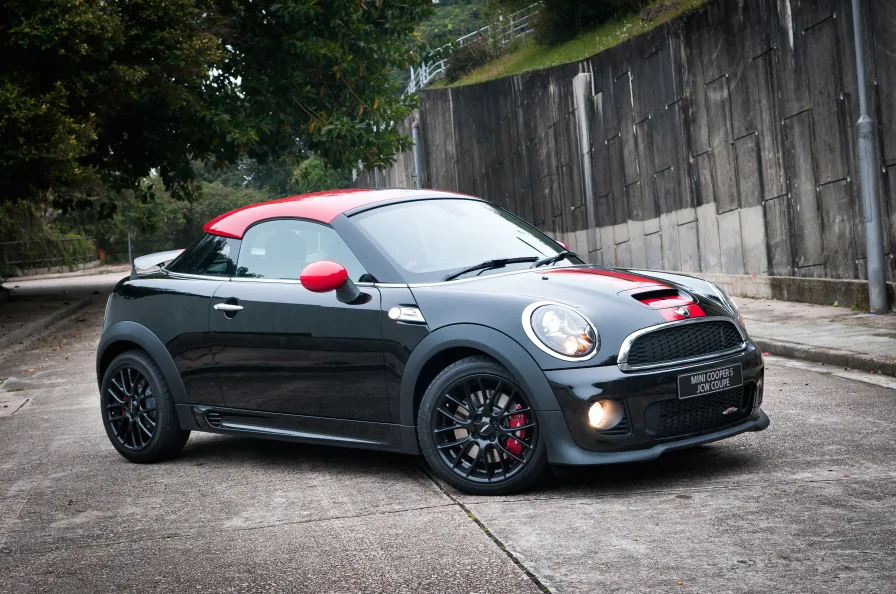In today’s automotive world, engine reliability has become a cornerstone of vehicle ownership satisfaction, resale value, and long-term cost of ownership. Engines are, without question, the beating heart of any car; their design, durability, and maintenance needs dictate much of a vehicle’s overall lifespan and performance.
Whether you’re a casual driver seeking dependable transportation or an enthusiast who demands peak performance from your machine, understanding which engines have historically proven robust—and which have fallen victim to chronic failure—is invaluable knowledge.
The engine’s complexity has escalated dramatically over the past few decades. Gone are the days when a simple carbureted four-cylinder would power your vehicle; modern engines often feature direct injection, turbocharging, variable valve timing, and intricate emission control systems.
While these innovations yield more power, improved fuel economy, and reduced emissions, they also introduce new points of failure and maintenance challenges. As automakers push technological boundaries, sometimes cost-cutting or rushed development leads to compromises in durability. This is why some engines become legends of longevity, while others earn notorious reputations for breakdowns.
In this article, we explore two contrasting categories of vehicles based on their engine reliability histories. First, we highlight five cars whose engines have garnered widespread acclaim for their resilience and lack of common failure points.
These vehicles showcase what thoughtful engineering, proven design principles, and solid manufacturing can achieve. Many owners have driven these cars for hundreds of thousands of miles without needing major engine repairs, illustrating that reliability and enjoyable driving are not mutually exclusive.
On the other side of the coin, we examine five cars that are unfortunately known for their persistent and costly engine failures. These engines serve as cautionary tales in automotive history, demonstrating how flawed designs, insufficient testing, or problematic components can lead to chronic breakdowns, early engine replacements, and significant owner dissatisfaction.
For prospective buyers and current owners alike, understanding these pitfalls can inform smarter decisions, whether that means avoiding certain models or proactively maintaining them to mitigate issues.
The importance of this knowledge extends beyond personal inconvenience. Engine failures carry environmental and economic costs. A failed engine often means scrapping or replacing the entire vehicle, increasing waste and resource consumption.
Moreover, repairs on faulty engines can be financially devastating, sometimes costing more than the vehicle’s value. By knowing which engines have historically succeeded or failed, consumers can make more sustainable choices that reduce environmental impact and avoid unnecessary expenses.
Throughout this comprehensive article, we will delve into the engineering features, failure modes, and owner experiences behind each highlighted engine. You will learn about why some engines—like those in the Toyota Camry, Honda Civic, Mazda Miata, Subaru Outback 3.6R, and Lexus RX 350—have stood the test of time with minimal issues.
Conversely, we’ll discuss the chronic problems faced by engines such as the Mini Cooper S N14 turbo, BMW N54 inline-6, Chrysler 2.7L V6, Ford 5.4L Triton V8, and Hyundai/Kia 2.4L GDI.
By the end, you’ll have a clear picture of the factors that contribute to engine longevity and the warning signs of potential engine disasters. Whether you’re shopping for a reliable used car, maintaining your current vehicle, or simply curious about automotive engineering, this article equips you with practical insights into the critical role that engine design and reliability play in everyday driving.
Also Read: 5 Engines With Legendary Camshafts and 5 That Always Need Top-End Work
5 Cars With No Common Engine Problems
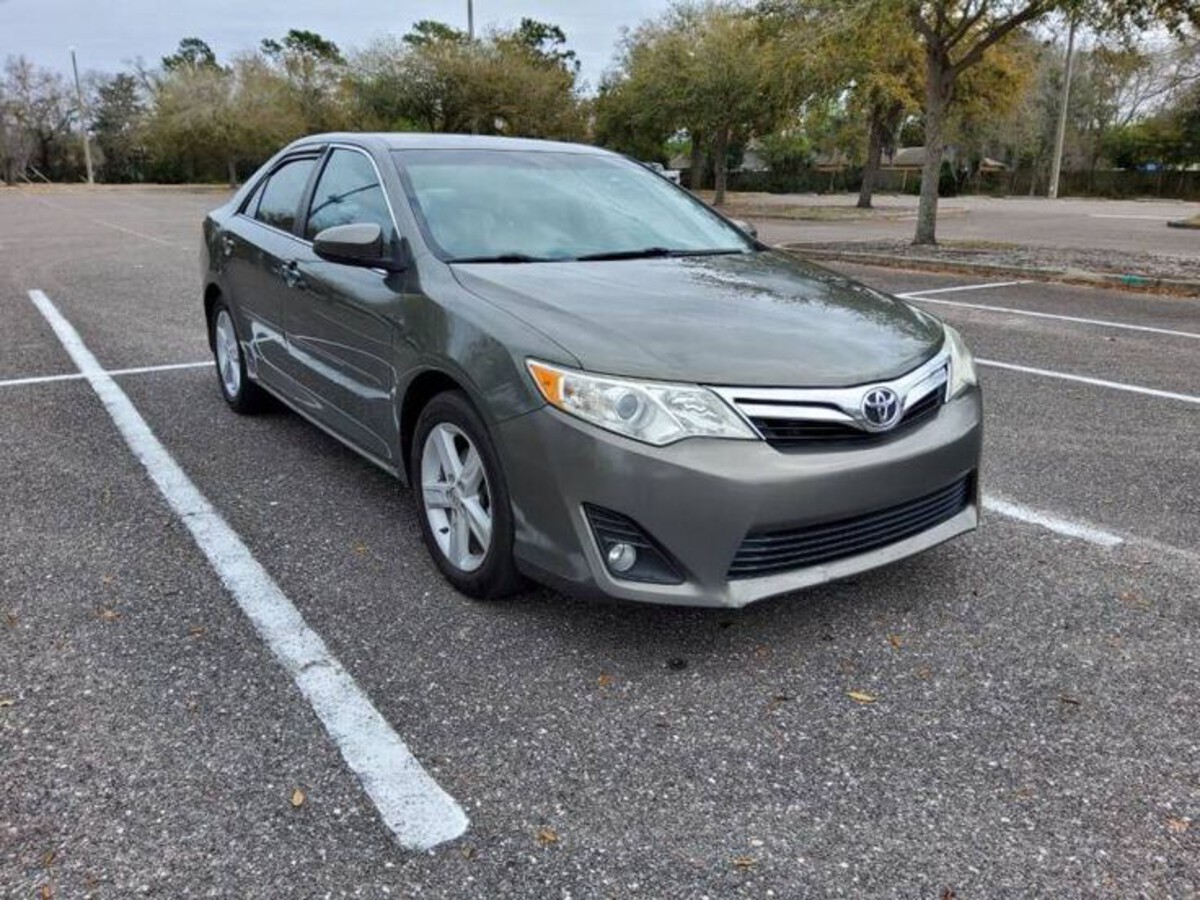
1. Toyota Camry (Especially 2005–2011 Models)
The Toyota Camry has built an ironclad reputation over the decades as a reliable, no-nonsense midsize sedan, and nowhere is this reputation more deserved than in the performance of its engines. Particularly in the model years between 2005 and 2011, the Camry delivered outstanding reliability thanks to Toyota’s exceptional engineering and rigorous quality control.
The engines found in these vehicles, such as the 2.4L 2AZ-FE 4-cylinder and the 3.5L 2GR-FE V6, are both known for their resilience and ease of maintenance. Owners routinely report reaching 250,000 miles or more with only basic upkeep, and major engine failures are extremely rare when regular service intervals are followed.
One reason for this high reliability is Toyota’s conservative approach to engine design. Rather than chasing high horsepower numbers or overcomplicating the engine with advanced but failure-prone technology, Toyota focused on balance, efficiency, and simplicity.
For instance, the 2.4L engine uses a cast aluminum block and dual overhead cams, a configuration known to be both durable and efficient. It doesn’t push the engine to its limits, which reduces internal wear and stress over time.
The 3.5L V6, meanwhile, offers strong performance without compromising long-term reliability, thanks to high-quality internal components and well-designed cooling and oiling systems.
Another factor contributing to the Camry’s engine success is Toyota’s emphasis on long-term durability across the entire drivetrain. The brand’s manufacturing processes involve strict tolerances and repeated quality inspections, which help eliminate manufacturing defects before the engine even reaches the customer.
Furthermore, Toyota’s engines typically run cooler and cleaner than many competitors, which prolongs the life of seals, gaskets, and other engine components that are prone to failure in lesser designs. These efforts result in a powertrain that maintains performance and efficiency for hundreds of thousands of miles.
The Camry also benefits from an enormous support network of parts and knowledge. Because of the car’s popularity, replacement parts are inexpensive and readily available, and most mechanics are intimately familiar with the Camry’s mechanical layout.
This ease of service plays a major role in keeping Camrys on the road long-term, especially for budget-conscious owners. DIY enthusiasts also praise the engine bay’s accessible layout, which allows for simple maintenance like spark plug replacements, oil changes, and coolant flushes without specialty tools or complicated disassembly.
Finally, the real-world performance of the Camry’s engine has stood the test of time in a variety of climates and usage conditions. Whether operating in extreme heat, frigid winters, or stop-and-go city traffic, the engine remains reliable and efficient.
Owners who perform basic maintenance—like oil changes every 5,000 miles and timely timing belt or chain inspections—report few if any mechanical failures. This consistency has helped make the Camry a favorite among everyone from rideshare drivers to retirees, and it remains one of the safest bets on the used market for buyers who want an engine that simply won’t quit.
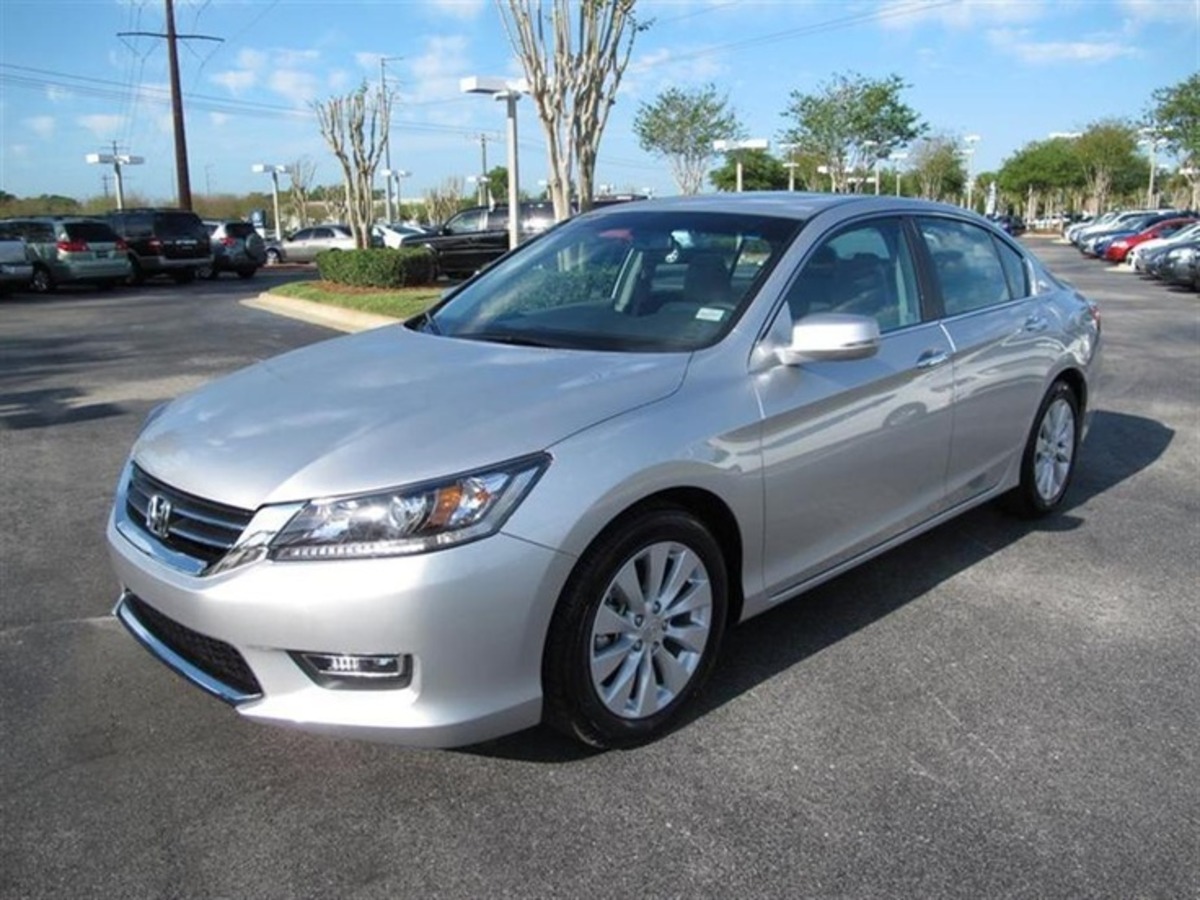
2. Honda Accord (2003–2012 4-Cylinder Models)
The Honda Accord is another vehicle that consistently earns accolades for its engine reliability, particularly the 4-cylinder variants produced between 2003 and 2012. These cars were powered primarily by Honda’s 2.4L K24 engine, a marvel of modern automotive engineering.
Unlike many engines that sacrifice durability for performance, the K24 strikes a perfect balance by offering ample power for daily driving while being renowned for its longevity. Drivers regularly report reaching 300,000 miles with minimal mechanical intervention, which is virtually unheard of outside of vehicles specifically designed for commercial or industrial use.
One of the standout features of the K24 engine is Honda’s i-VTEC (intelligent Variable Valve Timing and Lift Electronic Control) system. Unlike some variable valve systems that can be complex and prone to failure, i-VTEC is known for its simplicity and effectiveness.
It allows the engine to adapt to different driving conditions, optimizing fuel efficiency at low RPMs and enhancing power output at higher speeds. The system is designed with durable, high-tolerance materials that don’t wear out easily, which contributes significantly to the engine’s reliability. Over time, it became one of the most trusted valvetrain systems in the automotive world.
In addition to advanced yet reliable technology, the Accord’s 4-cylinder engine benefits from Honda’s strict quality assurance protocols and a culture of continuous improvement. Each iteration of the engine was refined to address minor quirks or inefficiencies in earlier models.
For instance, earlier K24 engines had some instances of premature spark plug fouling, but Honda quickly improved the combustion chamber design and ignition timing in later years. These refinements have led to a very consistent product that rarely sees issues such as head gasket failures, oil consumption, or overheating—problems that plague many other brands in this class.
Maintenance is another area where the Accord excels. Thanks to thoughtful engineering and an efficient layout, routine service items like the oil filter, spark plugs, serpentine belts, and timing chains are all easily accessible. The timing chain, in particular, eliminates the need for regular timing belt changes, a service that is often costly and time-consuming in other vehicles.
The chain is built to last the lifetime of the engine with minimal adjustment, provided that regular oil changes are performed. This reduces long-term ownership costs and ensures that more owners stay on top of maintenance, which only enhances engine longevity.
Real-world usage supports the Accord’s legendary reliability. These cars are frequently used in tough environments, including as fleet vehicles, taxis, and rideshare transports, and yet they consistently perform well under stress. The engine tolerates frequent starts and stops, prolonged idling, and even occasional neglect without developing major issues.
Many owners have gone hundreds of thousands of miles without any engine work beyond oil changes, a testament to the K24’s outstanding design and build quality. If you’re looking for a dependable engine that demands little and delivers a lot, the 4-cylinder Honda Accord from this era is an excellent choice.
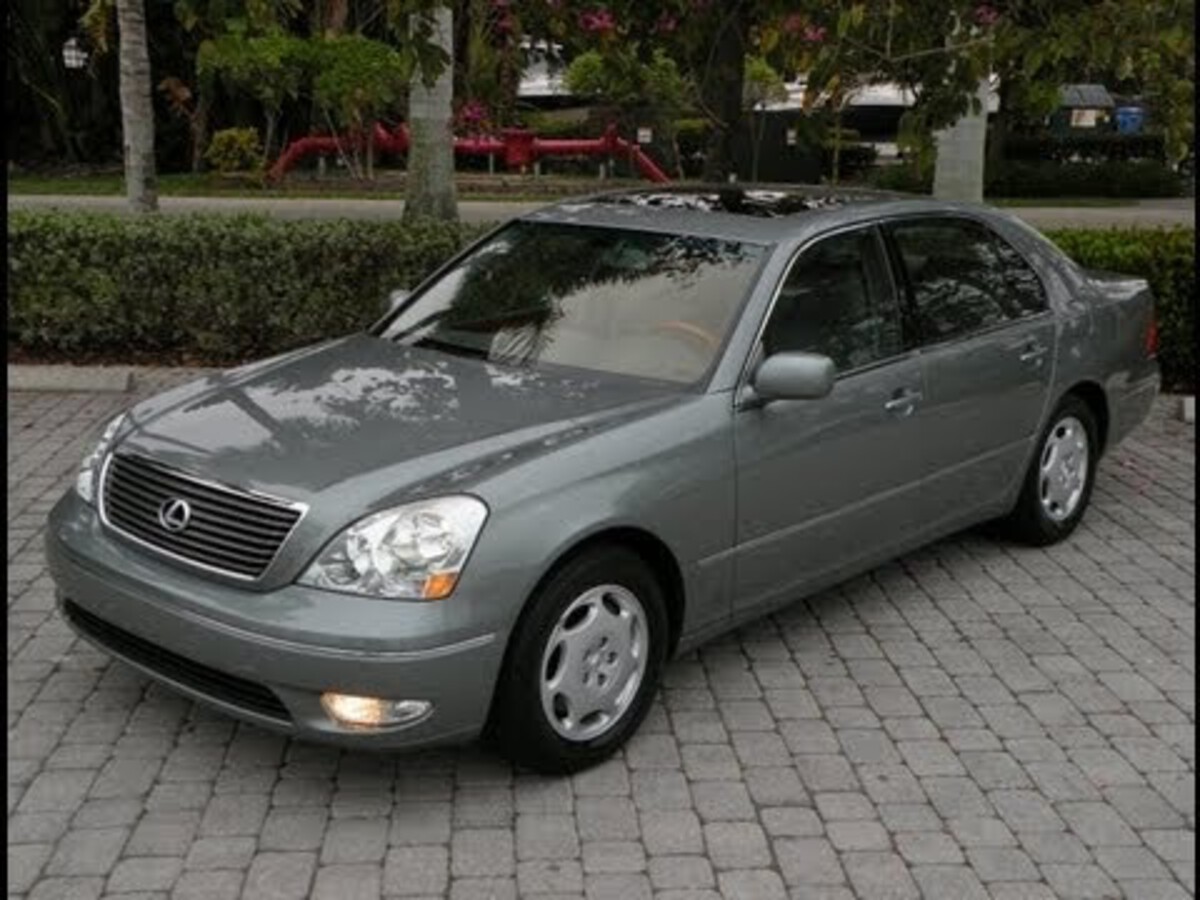
3. Lexus LS 430 (2001–2006)
When discussing automotive reliability, especially in the luxury segment, the Lexus LS 430 is frequently cited as a nearly perfect example. Its 4.3L V8 engine, known as the 3UZ-FE, combines silky smoothness with rock-solid durability.
Unlike many European luxury cars that often come with temperamental and expensive-to-repair engines, the LS 430 offers a quiet, comfortable ride with an engine that can easily outlast the chassis itself. These engines regularly clock 300,000 to 500,000 miles with routine maintenance and significant mechanical failures are incredibly rare even with age and mileage.
The 3UZ-FE is built to exceptional standards, featuring a cast aluminum block with iron cylinder liners, forged steel connecting rods, and a robust valvetrain. Toyota, which manufactures Lexus vehicles, designed this engine with longevity in mind rather than maximizing horsepower or torque at the expense of durability.
It uses a timing belt instead of a chain, but the belt system is accessible and easy to replace around the 90,000 to 100,000-mile mark. Additionally, Lexus equipped the engine with a highly efficient cooling system and low-friction internals, both of which contribute to its extended service life.
Perhaps one of the most impressive aspects of the LS 430’s engine is its refinement. The V8 is whisper-quiet at idle, and power delivery is seamless, thanks in part to variable valve timing and intelligent engine management systems. Yet, despite its luxury credentials, the engine is mechanically simple where it counts.
It avoids turbochargers, superchargers, or other high-stress components that can introduce additional failure points. This careful balance of simplicity and sophistication is what allows the engine to achieve high mileage with minimal trouble.
Even as these vehicles age, their engines remain one of the least likely components to fail. Common wear items like valve cover gaskets or serpentine belts may need occasional replacement, but major engine rebuilds or internal component failures are virtually unheard of.
Owners often report that the only reason they retire their LS 430 is due to body rust or suspension wear—not because of engine trouble. It’s not uncommon to find LS 430s from the early 2000s still serving as daily drivers with original engines that run as smoothly as they did two decades ago.
The ownership experience of an LS 430 is also bolstered by Lexus’s focus on ease of service. Parts are relatively affordable for a luxury car, and independent mechanics are often familiar with the engine layout due to its widespread use across other Toyota and Lexus platforms.
Whether you’re looking for a high-end ride or simply want a vehicle that will last a lifetime, the LS 430 and its venerable V8 engine remain an unparalleled choice in the realm of automotive dependability.
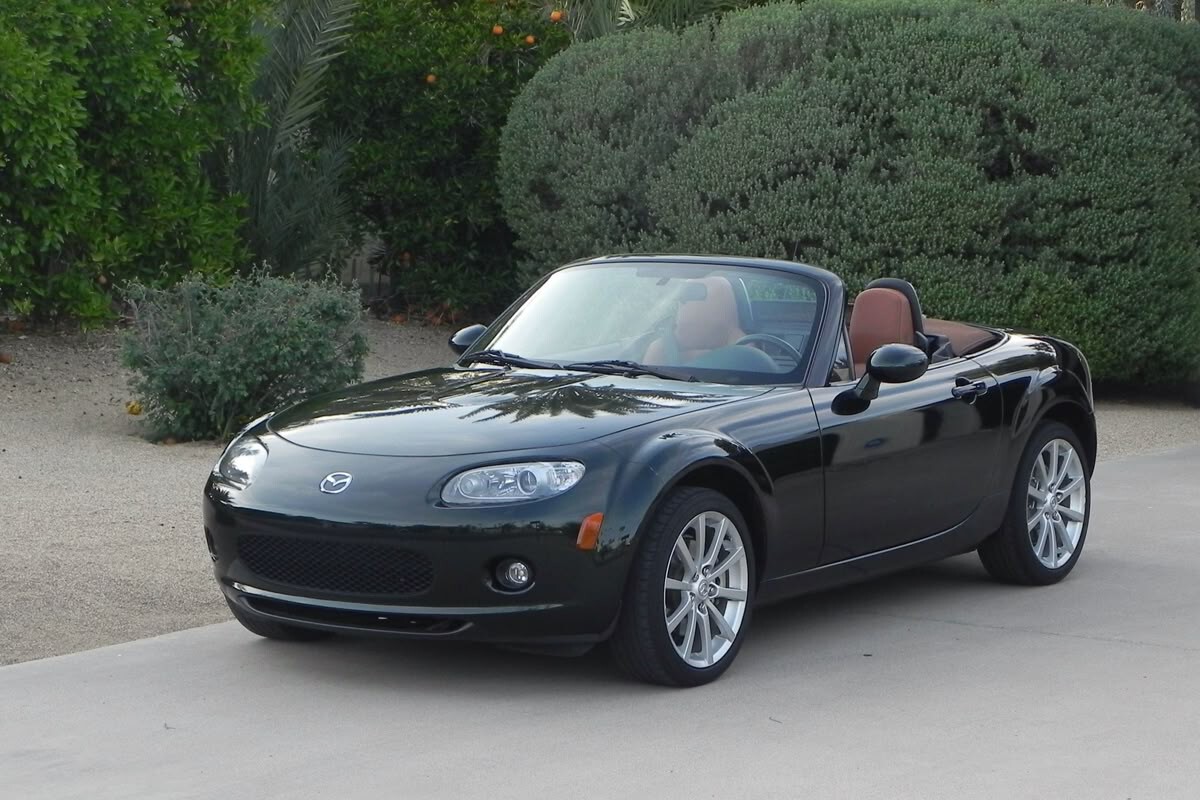
4. Mazda MX-5 Miata (NA and NB Generations, 1990–2005)
The Mazda MX-5 Miata is often praised for its handling and light-hearted driving dynamics, but what often goes unappreciated is just how reliable and resilient its engine is. The early NA (1990–1997) and NB (1999–2005) generations feature the 1.6L and 1.8L DOHC inline-4 engines, respectively, both of which have proven themselves over decades of hard use.
Designed with simplicity and balance in mind, these engines have been known to run for over 300,000 miles with regular maintenance, even when subjected to spirited driving and motorsport conditions.
The engines found in these Miatas are designed around durability and ease of maintenance. With a cast-iron block and aluminum head, the engine strikes a strong balance between heat dissipation and strength. The naturally aspirated design avoids many of the complications associated with forced induction, such as turbocharger failure or detonation stress.
This means fewer points of failure and a longer life expectancy under both normal and extreme driving conditions. Enthusiasts who drive their Miatas hard on the track often praise how these engines tolerate high RPMs and long durations of stress without overheating or mechanical breakdown.
Another key factor is the Miata’s simple engine layout, which makes repairs and diagnostics straightforward. There’s no need for special tools or complicated procedures to perform routine maintenance. Timing belts, valve cover gaskets, spark plugs, and accessory belts are all easily accessible, making it a favorite for DIY mechanics.
Because the car was built for enthusiasts, Mazda engineered the engine bay for both compactness and accessibility, allowing the engine to be serviced with minimal labor.
The engine’s reputation is further enhanced by its predictability and consistent performance. There are very few systemic issues reported across the first two generations.
Oil consumption is minimal, head gaskets are reliable, and cooling systems are effective at preventing overheating. Even after decades, owners are still regularly reporting high-mileage Miatas with original engines that start instantly and run smoothly. Many choose to refresh the engine simply for performance reasons, not out of necessity.
The Miata engine is also supported by an active and dedicated global community. Enthusiasts have meticulously documented every known issue, fix, and preventive maintenance step. This shared knowledge ensures that even novice owners can confidently maintain their Miatas and keep them running well into the future.
Whether used as a daily driver, a weekend toy, or a dedicated track car, the NA and NB Miata engines are virtually indestructible when properly cared for—a true testament to Mazda’s dedication to thoughtful engineering.

5. Subaru Outback (2015–2019 with 3.6R Engine)
The Subaru Outback is often associated with ruggedness, versatility, and all-weather capability, but it hasn’t always been synonymous with engine reliability. Many Subaru engines, particularly the 2.5L EJ25 found in earlier models, were plagued by infamous head gasket failures and oil consumption issues.
However, one notable exception to this trend is the 3.6R model, equipped with the EZ36 flat-six engine, produced between 2015 and 2019. This engine stands as one of the most durable and trouble-free powerplants Subaru has ever manufactured, offering both power and peace of mind for long-term ownership.
The EZ36 engine is a naturally aspirated, horizontally opposed six-cylinder engine—a design that provides a low center of gravity for better handling and balance. More importantly, it’s an engine built for longevity.
Unlike Subaru’s older boxer engines, which relied on timing belts that required replacement every 100,000 miles, the EZ36 uses a timing chain, eliminating a major maintenance point and reducing the chances of catastrophic failure. This timing system, combined with updated gaskets and redesigned cylinder heads, addresses the most common problems found in Subaru’s past engines.
The 3.6R engine also benefits from a robust internal architecture. It has reinforced pistons, upgraded oil circulation, and an improved cooling system that significantly reduces the chances of overheating or oil starvation—two major causes of engine wear in high-mileage vehicles.
Additionally, since the EZ36 doesn’t employ forced induction (i.e., it’s not turbocharged), there’s far less thermal and mechanical stress on the engine during daily driving or towing. This naturally aspirated configuration is simpler, more predictable, and less prone to sudden failures caused by boost-related overcompensation or detonation.
Real-world performance and owner testimonials support the 3.6R’s strong reputation. It’s not uncommon for owners to reach well over 200,000 miles with their Outback 3.6R with little more than routine oil changes, spark plug replacements, and transmission servicing.
Compared to the more widely sold 2.5i models, the 3.6R experiences fewer engine-related warranty claims and has been the subject of far fewer recalls or technical service bulletins. It’s especially praised by drivers who live in mountainous or snowy areas, where both the engine’s strong torque and the vehicle’s all-wheel-drive system make it a go-to option for outdoor and winter adventurers.
Lastly, the engine’s dependability is enhanced by Subaru’s improved manufacturing standards during the mid-to-late 2010s. As Subaru faced mounting criticism over earlier engine issues, they made a concerted effort to reengineer their most critical components.
The result was a series of engines—including the EZ36—that could finally match the longevity of Toyota or Honda powerplants. For those seeking a reliable Subaru without the baggage of older engine problems, the Outback 3.6R is an outstanding choice.
It delivers the brand’s signature AWD capability, comfortable ride quality, and rugged styling, all backed by a six-cylinder engine that stands as one of Subaru’s finest achievements in reliability.
5 Cars With Known Engine Failures

1. Mini Cooper S (2007–2012, R56 Generation)
The 2007–2012 Mini Cooper S, known by its internal R56 designation, is infamous in enthusiast and consumer circles for its chronic engine problems. Under the hood lies a 1.6-liter turbocharged engine co-developed with PSA (Peugeot-Citroën), dubbed the N14 engine.
While the concept of a small, sporty, turbocharged hatchback was attractive, execution fell short. The N14 engine quickly gained a reputation for being unreliable, and unfortunately, many of its issues revolve around critical engine systems rather than minor quirks. These problems have plagued thousands of owners, many of whom faced expensive repairs well before 100,000 miles.
One of the most common and damaging issues is the failure of the timing chain and tensioner assembly. The N14 engine uses a timing chain located at the rear of the engine, which is much harder and costlier to service than a front-mounted design. Many owners report hearing a rattling or “death rattle” sound at cold start—a clear indication that the timing chain tensioner is failing.
If not addressed early, this failure can cause the chain to skip teeth or break entirely, resulting in bent valves, piston damage, or full engine destruction. This is particularly egregious because timing chains are usually considered “lifetime” components and aren’t supposed to require regular replacement.
Another major concern with the R56 Cooper S is carbon buildup on the intake valves due to the use of direct injection. Unlike port-injected engines that clean intake valves with fuel spray, direct-injection engines don’t wash the valves, leading to thick deposits of carbon that can significantly affect performance, fuel economy, and even cause misfires.
Walnut blasting—a labor-intensive and costly service—is often required as early as 30,000 miles. Without this service, drivability and reliability both suffer, and the problem only compounds over time.
Additionally, the high-pressure fuel pump (HPFP) and turbocharger systems in the N14 engine are also prone to failure. The HPFP is a frequent weak point in the fueling system and can leave drivers stranded when it fails.
Turbocharger seals and wastegate actuators are also known to degrade prematurely, leading to oil leaks, poor boost pressure, or complete turbo failure. These issues are not only expensive to repair but can cascade into further engine damage if ignored. For a small car with a premium badge, the repair bills can often be shockingly high and frequent.
While later models with the updated N18 engine (introduced in 2011) resolved many of these problems, the damage was already done to the R56’s reputation. Many mechanics caution buyers away from these models unless they have detailed service records and evidence of proactive maintenance.
Despite its charm and spirited driving feel, the 2007–2012 Mini Cooper S is a textbook example of how engineering flaws can ruin an otherwise promising vehicle. Potential buyers should be wary, especially if considering one with over 60,000 miles that hasn’t had critical engine work done.
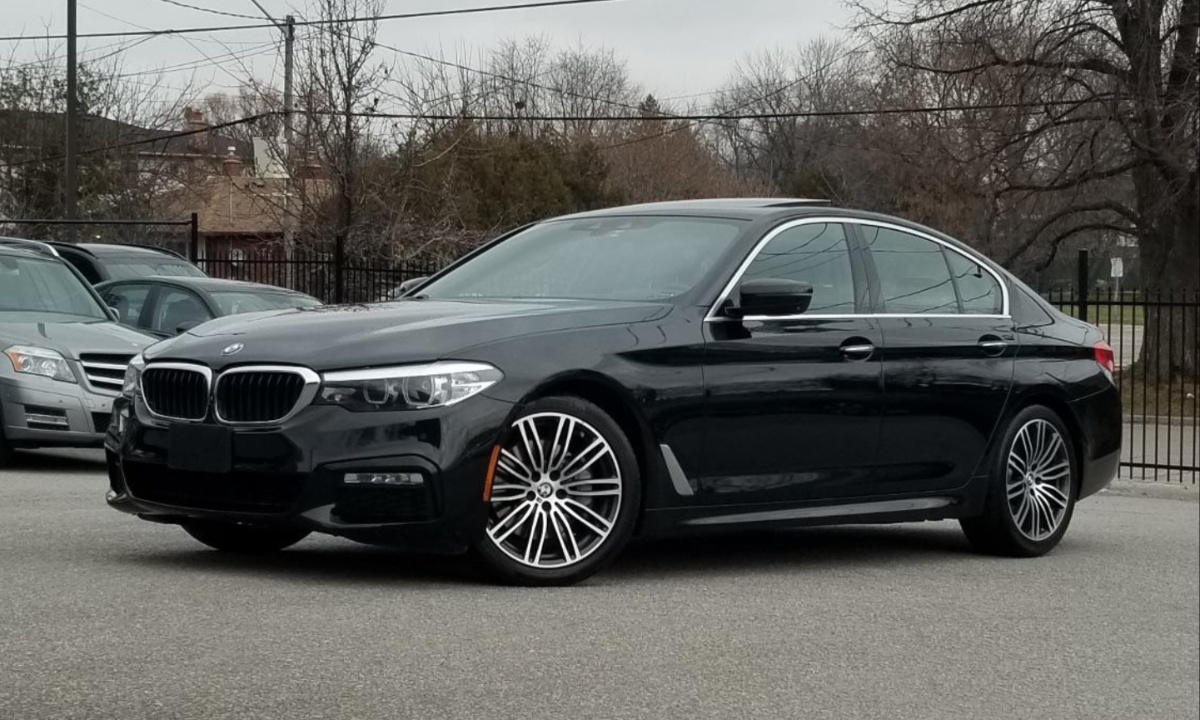
2. BMW 5 Series (2008–2010, 535i with N54 Engine)
BMW’s 5 Series has long been viewed as a perfect blend of luxury and performance, but the 2008–2010 535i equipped with the twin-turbocharged N54 inline-6 engine has been the source of considerable frustration for owners and mechanics alike.
The N54 engine, while groundbreaking in terms of power delivery and responsiveness, suffers from multiple chronic failures that are both costly and frequent. While it is capable of impressive performance when properly maintained, its long-term reliability is deeply compromised by poor component design and a reliance on high-stress systems.
One of the most significant and well-documented problems is high-pressure fuel pump (HPFP) failure. The HPFP on the N54 engine is a consistent failure point, and BMW even issued extended warranties and recalls due to the sheer number of failures.
When the pump fails, drivers often experience sudden loss of power, engine hesitation, or a complete inability to start the vehicle. This failure can occur with little to no warning, creating safety concerns as well as steep out-of-pocket costs if the warranty has lapsed. Even with replacement pumps, some owners report repeat failures within relatively short intervals.
Another key issue plaguing the N54 engine is the turbocharger wastegate rattle and failure. Over time, the bushings and arms connected to the wastegate actuators wear out, creating a distinctive rattling noise during acceleration and deceleration.
More critically, worn wastegates can cause boost leaks and underperformance, and replacing them is labor-intensive, often requiring the removal of the engine or extensive disassembly of the turbo system. BMW did acknowledge the issue but provided limited recourse for affected drivers, and repairs are often well into the thousands of dollars.
Carbon buildup is also a major concern with this direct-injected engine, especially in the intake tract. Similar to the Mini Cooper’s N14 engine, the N54 suffers from thick deposits forming on intake valves, which can lead to rough idling, misfires, poor acceleration, and reduced fuel economy.
Regular walnut blasting is required to maintain smooth performance, but BMW did not originally include this as part of standard maintenance, leaving many owners unaware until major drivability issues occurred.
To compound the problem, cooling system and oil leakage issues are also common. The electric water pump is known to fail suddenly, potentially leading to overheating and engine damage. Valve cover gaskets, oil filter housing gaskets, and oil pan gaskets all tend to leak prematurely, often coating the engine in oil and requiring expensive repairs.
This trifecta of oil leaks, overheating risks, and turbo failures creates a highly unstable ownership experience. While enthusiasts may tolerate the maintenance in exchange for performance, the average driver is likely to be overwhelmed by the costs.
In conclusion, while the N54-powered 535i delivers exhilarating power and smoothness when everything works, it is burdened by too many catastrophic failure points to recommend as a reliable used car.
Unless maintained meticulously—and often preemptively—these engines can become ticking time bombs. For anyone considering a used BMW 535i from this era, a full inspection and thorough maintenance history are essential.
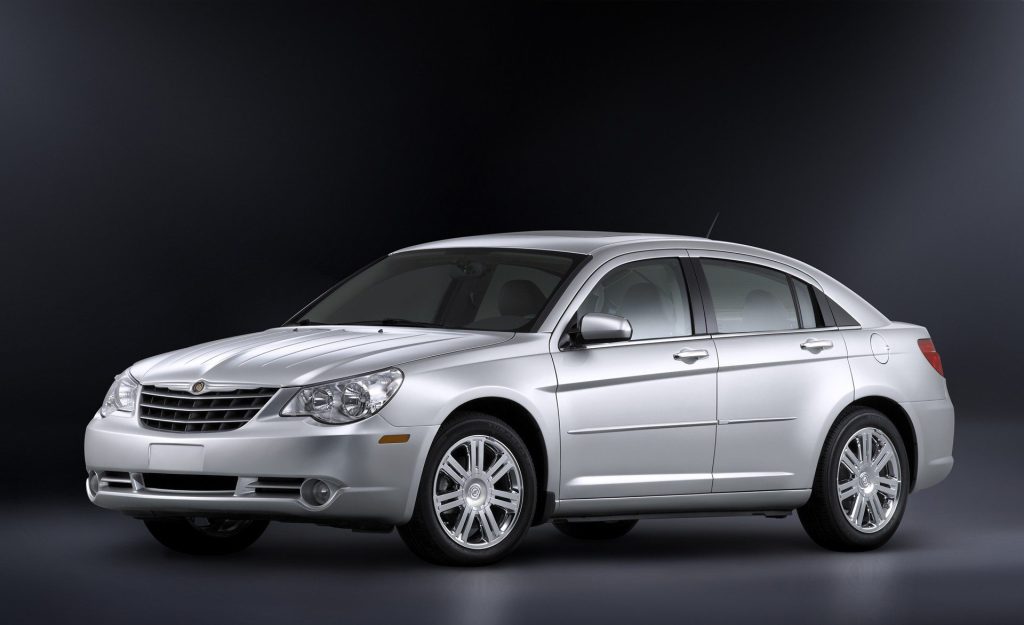
3. Chrysler 2.7L V6 Engine (1998–2010 Models – Dodge Intrepid, Chrysler Concorde, Sebring, etc.)
The Chrysler 2.7L V6 engine, widely used in a variety of models from the late 1990s through 2010, is perhaps one of the most notorious examples of an engine plagued with widespread, well-documented failure. Introduced with high hopes for a new era of efficiency and performance, this engine quickly became a liability for Chrysler owners due to a combination of poor internal design, inadequate oiling, and cooling system weaknesses.
It was offered in several vehicles, including the Dodge Intrepid, Chrysler Concorde, Sebring, and Dodge Stratus—many of which became virtually unsellable on the used market once their reputation for engine failures spread.
The most infamous issue with the 2.7L V6 is sludge buildup, which results in oil passages becoming clogged, starving the engine of lubrication. This problem can occur shockingly early—even under 70,000 miles—especially in vehicles that do not receive perfect, consistent oil changes.
Unlike more forgiving engines, the 2.7L’s internal design includes narrow oil passageways that are extremely sensitive to any contamination or viscosity issues. Once sludge builds up in these passages, it can lead to oil starvation in the crankshaft and camshaft areas, often resulting in complete engine seizure without much warning.
Cooling system issues also played a significant role in the 2.7L engine’s unreliability. A poorly designed water pump, prone to failure, was tucked inside the engine itself and driven by the timing chain. When the pump fails, coolant can leak directly into the engine oil, accelerating sludge formation and leading to catastrophic internal damage.
This design flaw not only makes replacement time-consuming and expensive, but it also means that coolant leaks often go unnoticed until major damage has occurred. Once the coolant and oil mix, engine bearings, seals, and other components begin to break down rapidly.
Additionally, the timing chain tensioner system in the 2.7L engine is another critical failure point. Over time, the plastic chain guides can degrade or snap, resulting in timing chain slack or misalignment.
If the chain skips a tooth or fails, piston-to-valve contact can occur, destroying the top end of the engine. In some cases, timing issues also led to poor fuel economy, rough running, or stalling—symptoms often misdiagnosed until a more catastrophic event reveals the true cause.
What makes the 2.7L V6 particularly frustrating is that Chrysler did little to address the fundamental issues during the engine’s long production run. Even as failures mounted and class-action lawsuits emerged, the company continued to use the engine in a variety of vehicles.
Despite modest improvements in later years, the 2.7L V6 remained a black mark on Chrysler’s engineering record. Today, mechanics often advise avoiding any vehicle with this engine, and many used car dealers won’t even accept trade-ins equipped with it. For those who already own one, maintaining an immaculate oil change record and proactively replacing key components can delay the inevitable, but rarely prevent it altogether.
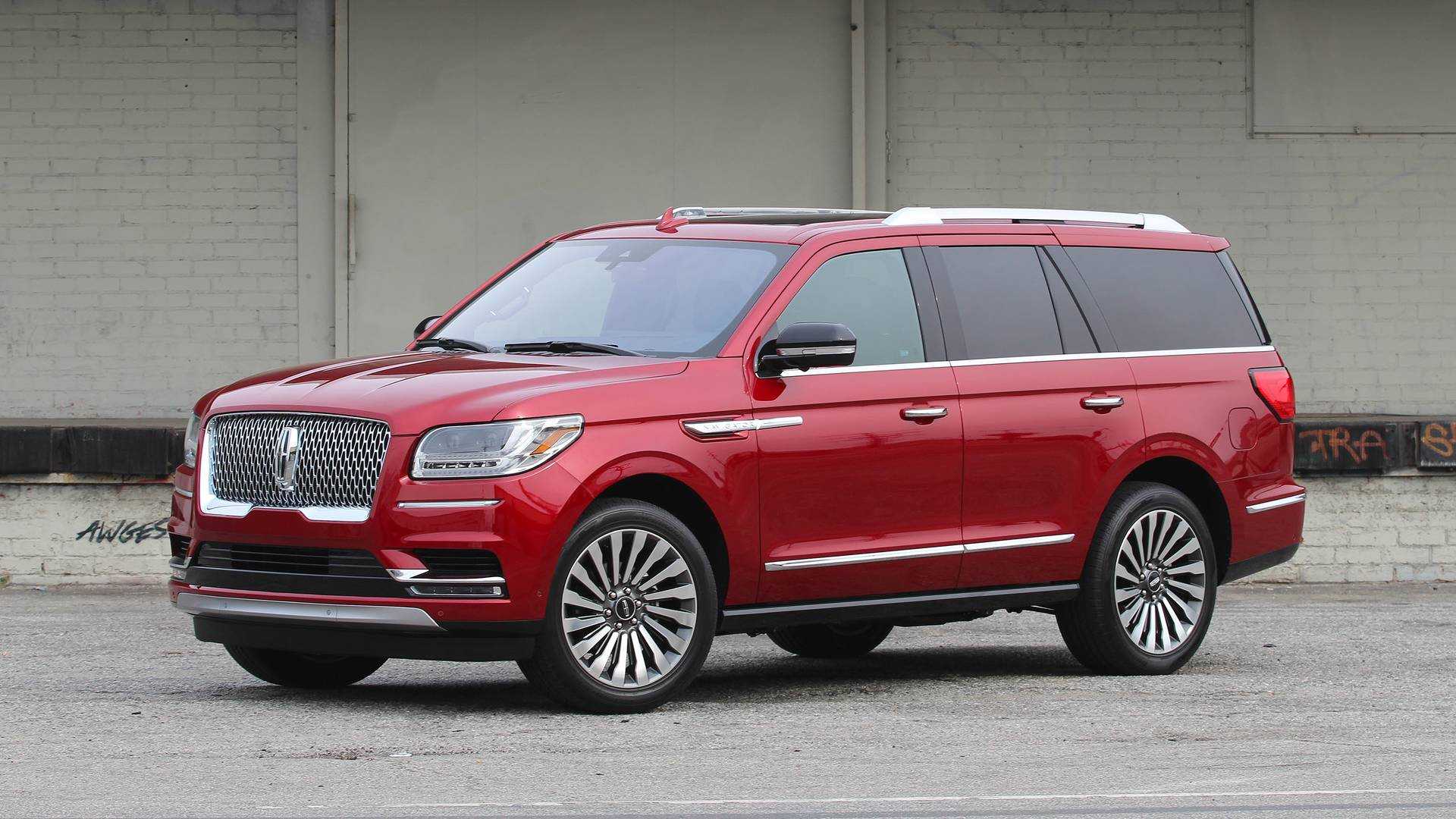
4. Ford 5.4L Triton V8 (1997–2010 – F-150, Expedition, Lincoln Navigator, etc.)
The Ford 5.4L Triton V8 was part of Ford’s modular engine family and saw widespread use in some of the brand’s most popular vehicles, including the F-150, Expedition, E-Series vans, and the Lincoln Navigator. On paper, the engine was a workhorse—large displacement, decent torque, and theoretically engineered for durability.
In practice, however, it became one of the most criticized engines in Ford’s modern history due to a slew of well-known, recurring engine issues. The problems became so common that entire forums and support groups exist solely to help owners navigate the constant barrage of mechanical headaches.
One of the most widespread and troubling issues was the spark plug blowout problem, especially in earlier versions of the engine. Due to poor head design, the spark plug threads were too shallow, and over time, the combustion pressure could blow the plug straight out of the cylinder head, often taking the threads with it.
This resulted in costly repairs involving thread inserts or cylinder head replacement. Even worse, the incident could happen while driving, producing a loud bang and sometimes damaging ignition coils or causing misfires. Later iterations of the engine replaced this problem with a different one: spark plugs that break off in the head during removal, requiring specialized tools to extract and hours of labor.
Another significant problem with the 5.4L Triton was its timing chain and cam phaser system, particularly in the 2004–2010 iterations that used variable valve timing. The cam phasers are electronically controlled components that adjust camshaft timing for performance and fuel economy.
Unfortunately, they are prone to rattling, sticking, and ultimately failing altogether, especially if the engine is starved of clean oil. The timing chain tensioners and guides also degrade prematurely, and the entire timing system is difficult and expensive to repair, often requiring engine removal or extensive disassembly.
Oil pressure problems were also commonplace. A failing oil pump or clogged oil passages could lead to low oil pressure warnings, which, if ignored, would result in serious internal damage.
In some cases, owners experienced knocking noises from the bottom end of the engine—an indicator of worn crankshaft or rod bearings. Because these engines are difficult to disassemble and repair, many vehicles were simply scrapped or required full engine replacements rather than partial rebuilds.
Despite its widespread use, the Ford 5.4L Triton V8 left behind a legacy of frustration. While some units did survive into high mileage with meticulous care, the list of known and costly issues makes this engine one to avoid for buyers seeking long-term dependability.
In many circles, especially among independent mechanics and used truck buyers, the 5.4L Triton has become a cautionary tale about how a promising engine design can go disastrously wrong due to poor implementation and lack of long-term foresight.
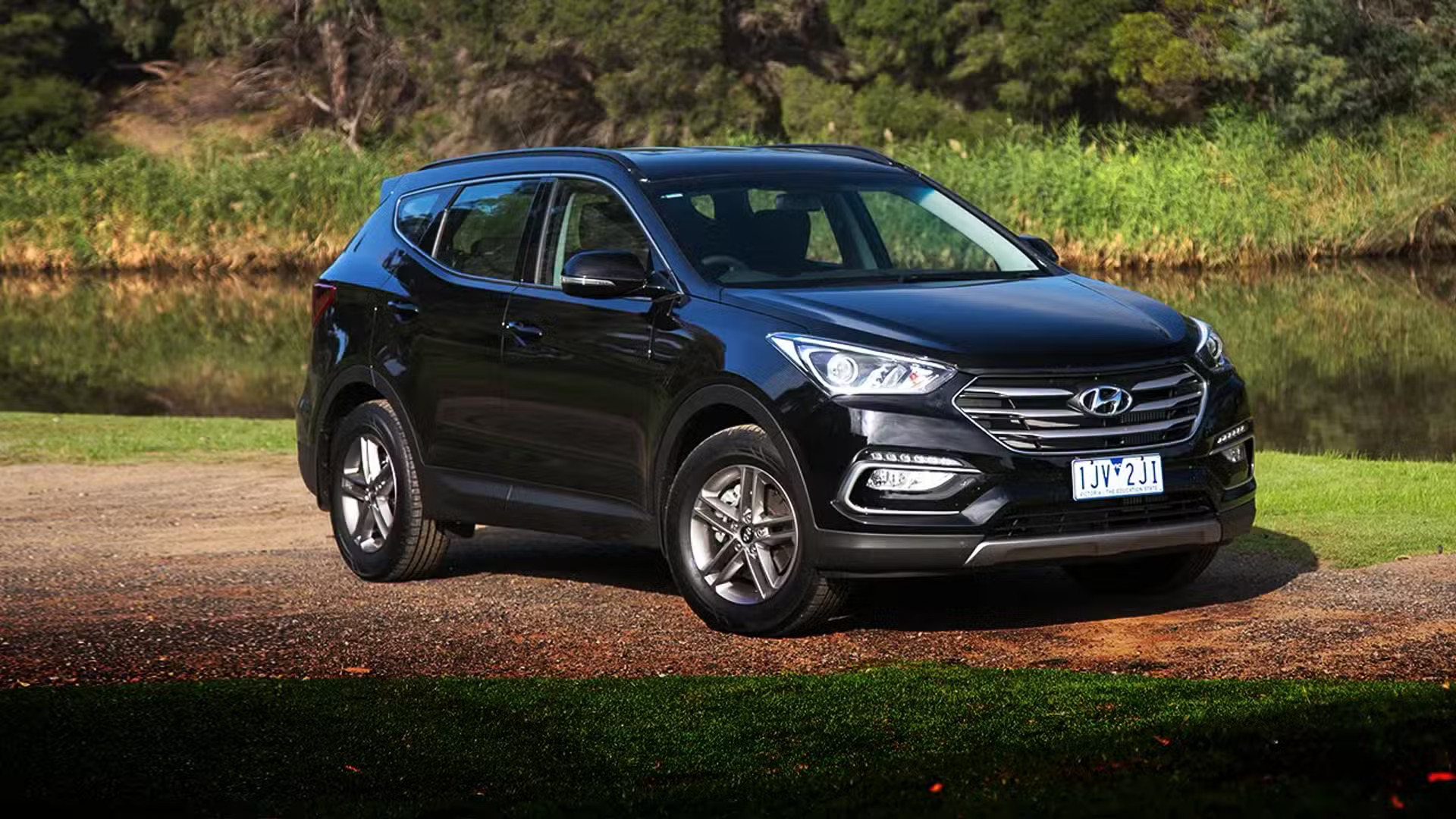
5. Hyundai/Kia 2.4L GDI Engine (2011–2019 – Sonata, Optima, Santa Fe, Sportage, etc.)
In recent years, Hyundai and Kia have made remarkable strides in vehicle design, feature content, and affordability. However, this progress has been marred by severe and widespread engine issues in one of their most commonly used powerplants: the 2.4L GDI (Gasoline Direct Injection) engine.
Found in millions of vehicles between 2011 and 2019—including the Hyundai Sonata, Santa Fe, Kia Optima, and Sportage—this engine has been the subject of lawsuits, recalls, and thousands of engine replacements due to catastrophic failure.
At the heart of the issue is a design flaw in the engine’s internal machining, specifically with the crankshaft and rod bearings. Manufacturing debris and poor oil passage tolerances have been cited as contributing factors. The result? Premature bearing wear that often leads to engine knocking, reduced oil pressure, and, eventually, full engine seizure.
In many reported cases, these failures occurred well before 100,000 miles, and sometimes even under warranty. The issue was so severe that Hyundai and Kia initiated one of the largest engine-related recalls in modern automotive history.
Adding to the problem is the lack of early warning signs. In many cases, the engine would fail with little more than a faint ticking noise or mild hesitation. If owners were unaware or delayed service, the engine could throw a rod through the engine block or suffer complete internal failure while driving.
These dramatic blowouts often left drivers stranded and sometimes posed safety hazards on highways. To make matters worse, replacement engines supplied under recall were, for a time, also susceptible to similar failures if they weren’t part of a later production fix.
The 2.4L GDI engine also struggled with oil consumption and fuel system issues, particularly in higher mileage examples. Owners frequently reported losing 1–2 quarts of oil between changes with no visible leaks or smoke, suggesting poor piston ring sealing or valve guide wear.
Combine that with a sensitive high-pressure fuel system, and you have a recipe for performance degradation, misfires, and increased emissions. Although Hyundai and Kia extended powertrain warranties and issued software updates to detect early failure, many owners remained skeptical due to inconsistent dealer support and denied warranty claims.
While not every 2.4L GDI engine fails, the statistical likelihood is far too high for a modern engine. The volume of affected vehicles, combined with the seriousness of the failures, significantly tarnished Hyundai and Kia’s reliability reputations during this era.
Prospective buyers of used models equipped with this engine are strongly advised to confirm whether the car has had its recall completed, verify service records, and consider investing in an extended warranty if still available. Despite Hyundai/Kia’s recent improvements, the 2.4L GDI stands as a stark warning of how cost-cutting and rapid scaling can undermine long-term engine durability.
Also Read: 5 SUVs That Go 10 Years Without Rust and 5 That Rust in Just 3 Winters
Engine reliability remains one of the most crucial considerations for anyone investing in a vehicle, whether new or used. As we have explored in this article, the difference between a powertrain that performs flawlessly for hundreds of thousands of miles and one that suffers premature catastrophic failure often comes down to engineering decisions, manufacturing quality, and ongoing maintenance.
Understanding the history of engine performance across popular models enables consumers to make more informed, confident choices—and avoid vehicles that have a track record of failure.
The five cars identified as having engines with no common problems represent what the automotive industry can achieve when durability and design are prioritized. Toyota’s Camry, Honda’s Civic, Mazda’s Miata, Subaru’s Outback with its 3.6R engine, and the Lexus RX 350 stand out as examples of powertrains engineered for longevity and reliability.
These engines combine robust internal components, proven design architectures, and straightforward maintenance requirements. Their widespread success is a testament to the value of incremental improvements, conservative engineering, and the avoidance of unnecessary complexity.
On the flip side, the engines with known failures—such as the Mini Cooper S’s N14, BMW’s N54, Chrysler’s 2.7L V6, Ford’s 5.4L Triton, and Hyundai/Kia’s 2.4L GDI—highlight the pitfalls when complexity, cost-cutting, or design flaws converge.
These powerplants share common themes: sensitivity to oil quality and maintenance, vulnerable timing and fuel systems, and an unfortunate propensity for early failure. These issues often result in costly repairs, headaches for owners, and a diminished resale value for the affected vehicles.
It’s important to recognize that no engine is truly invincible. Even the most reliable designs require regular maintenance, timely oil changes, and attention to symptoms. However, the gap between a dependable engine and a problematic one often manifests in the severity and frequency of repair needs.
The engines covered in this article with no common failures generally offer owners peace of mind and fewer surprises, whereas those known for failure demand vigilance and often, heavy financial investment to keep running.
This knowledge is especially vital in today’s rapidly evolving automotive landscape. As manufacturers continue adopting turbocharging, direct injection, electrification, and advanced electronics, the potential for new failure modes grows.
Consumers must balance enthusiasm for innovation with pragmatism about reliability and ownership costs. Meanwhile, automakers should heed the lessons from past failures to improve engineering standards, testing, and quality assurance.
For buyers, this means research is essential. Beyond brand reputation, digging into specific engine families and their histories can save thousands of dollars and countless hours of frustration.
For current owners, it underscores the value of preventive maintenance and using high-quality fluids and parts. And for the industry, it reinforces that reliability will remain a key differentiator in a crowded marketplace.
Ultimately, engine reliability shapes the relationship between driver and machine. It affects how confident we feel behind the wheel, how often we visit the mechanic, and whether a car becomes a trusted companion or a source of constant worry.
By understanding which engines have proven their mettle and which ones warrant caution, drivers can make smarter decisions, protect their investments, and enjoy the road ahead with fewer worries.

